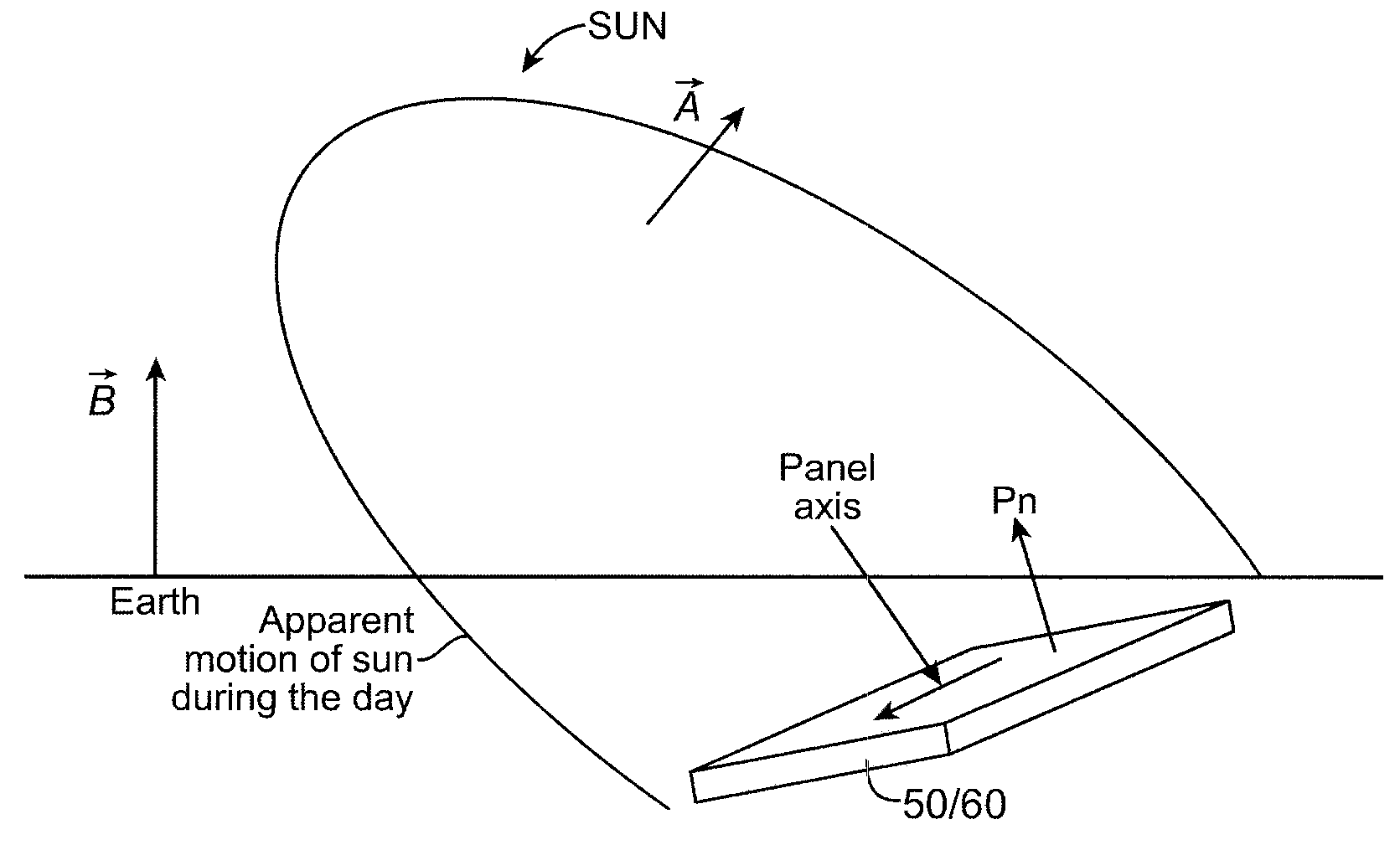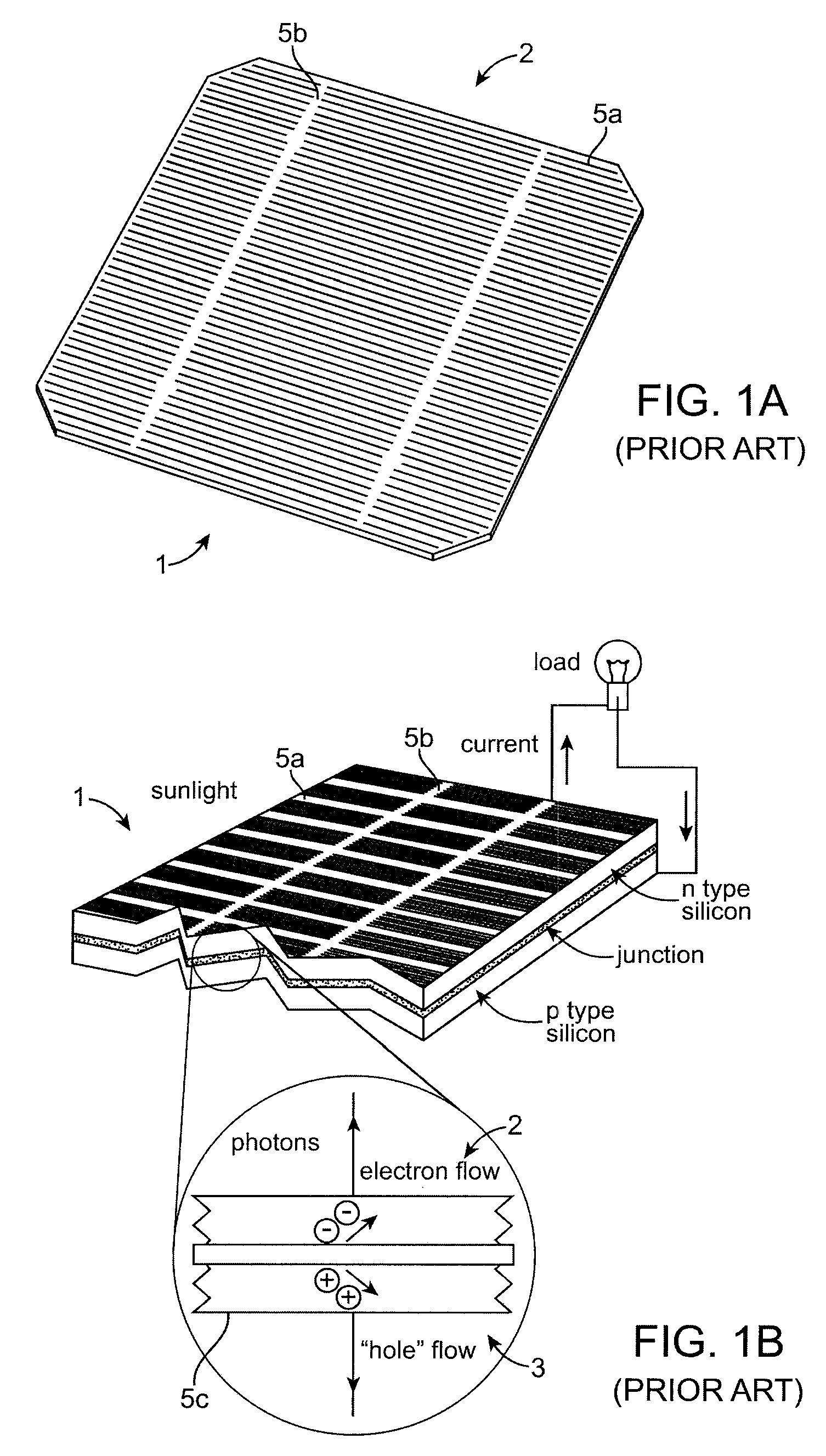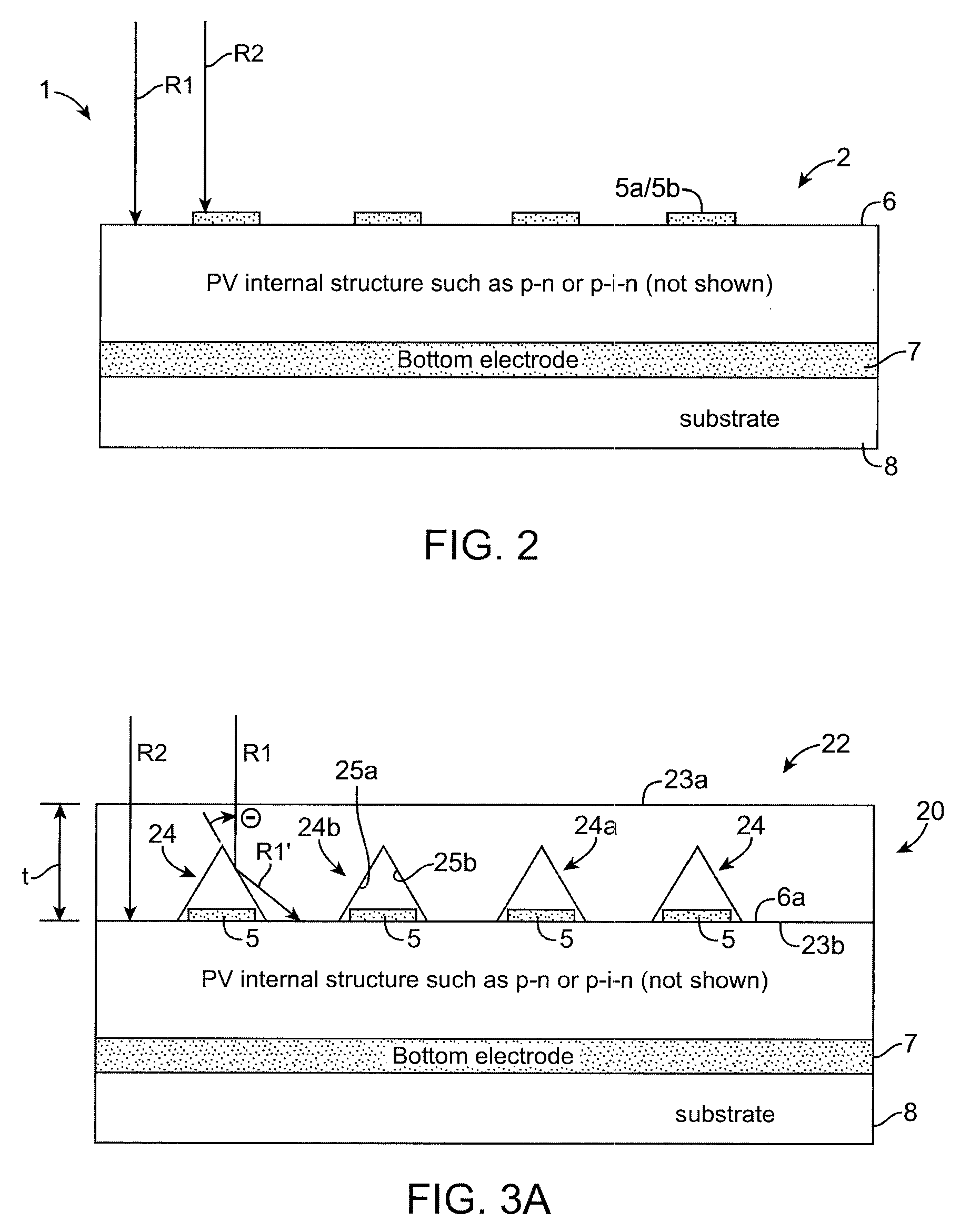Solar Energy Collection Devices
a solar energy and collection device technology, applied in the safety of solar heat collectors, pv power plants, light and heating equipment, etc., can solve the problems of 7% efficiency loss due to reflection, limited supply of photovoltaic materials, etc., to improve the versatility and simplicity of solar collection devices, reduce costs, and improve solar energy collection
- Summary
- Abstract
- Description
- Claims
- Application Information
AI Technical Summary
Benefits of technology
Problems solved by technology
Method used
Image
Examples
Embodiment Construction
[0074]Photovoltaic (PV) solar cell efficiency, i.e., the percentage or fraction of the sun's energy striking the surface of a PV cell that is converted into electrical energy, can range from about 5% to about 40% at present time. The supply of PV material, however, is not sufficient to meet demands at this time. This is particularly true for higher quality PV material such as crystal silicon or gallium arsenide. The disclosure provides several embodiments of solar collection devices intended to increase the amount of power that can be drawn from PV material, decrease costs of manufacture for solar panels, solar cells that can produce greater power output without increased demand on PV material, and simplify the deployment of solar cells / modules / panels or alignment of such systems to make the best use of the sun's energy.
[0075]FIG. 2 depicts a cross-sectional view of the solar cell 1 depicted in FIGS. 1A-1B in more detail. The solar cell 1 has a sun facing side 2 formed by an upper s...
PUM
 Login to View More
Login to View More Abstract
Description
Claims
Application Information
 Login to View More
Login to View More - R&D
- Intellectual Property
- Life Sciences
- Materials
- Tech Scout
- Unparalleled Data Quality
- Higher Quality Content
- 60% Fewer Hallucinations
Browse by: Latest US Patents, China's latest patents, Technical Efficacy Thesaurus, Application Domain, Technology Topic, Popular Technical Reports.
© 2025 PatSnap. All rights reserved.Legal|Privacy policy|Modern Slavery Act Transparency Statement|Sitemap|About US| Contact US: help@patsnap.com



